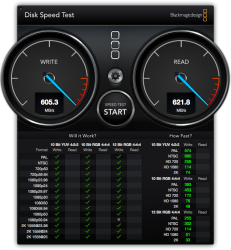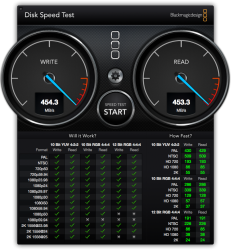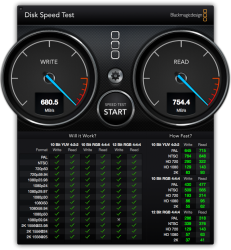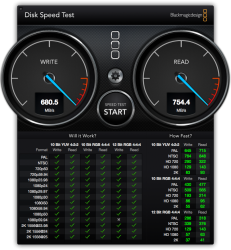Hi all,
I just got a Mac Pro 2013 6 core with the 500gb ssd and looking for advice how to best setup external storage for fast access and secure backup.
Primary use will be Photoshop (large files) with some video editing in FCP.
What I am looking for is:
a: A working drive for current project files, looking for read / write speeds in the 700's or higher. (After a project is finished it will be archived on a NAS)
b: Backup drive of the working drive above.
c: Timemachine backup of Mac Pro's internal drive
One of the options I looked at for the working drive is the Lacie little big disk thunderbolt 2. It seems extremely fast but quite pricy for the amount of storage?
Another option is raid storage with hard drives or ssd's, for example one of Promise solutions or the OWC Thunderbay 4. This could either be setup as raid 0 with an additional backup connected or raid 5 for slower speeds but redundancy. Are there other raid options out there that would be more suitable / better / cheaper?
My boot drive on my old mac pro is on a 250 ssd and is almost completely full so I don't think the 500gb internal pcie ssd would be big enough to host project files, unless the system would get slimmed down by moving home folders and mail boxes externally?
Any advice much appreciated!
I just got a Mac Pro 2013 6 core with the 500gb ssd and looking for advice how to best setup external storage for fast access and secure backup.
Primary use will be Photoshop (large files) with some video editing in FCP.
What I am looking for is:
a: A working drive for current project files, looking for read / write speeds in the 700's or higher. (After a project is finished it will be archived on a NAS)
b: Backup drive of the working drive above.
c: Timemachine backup of Mac Pro's internal drive
One of the options I looked at for the working drive is the Lacie little big disk thunderbolt 2. It seems extremely fast but quite pricy for the amount of storage?
Another option is raid storage with hard drives or ssd's, for example one of Promise solutions or the OWC Thunderbay 4. This could either be setup as raid 0 with an additional backup connected or raid 5 for slower speeds but redundancy. Are there other raid options out there that would be more suitable / better / cheaper?
My boot drive on my old mac pro is on a 250 ssd and is almost completely full so I don't think the 500gb internal pcie ssd would be big enough to host project files, unless the system would get slimmed down by moving home folders and mail boxes externally?
Any advice much appreciated!





